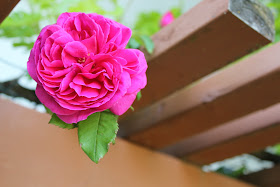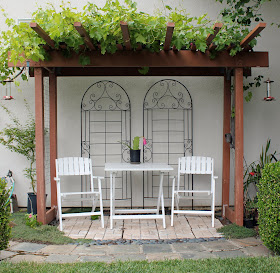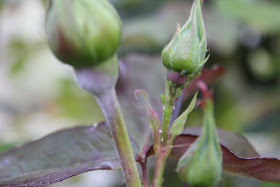Fig. 1 Aphids
When it comes to roses, the peak of flowering in our area is now. During this time, plants have large leaves; the flowers are huge; and their colors are intense. The weather is optimum for plant growth and even for pests. As a general rule, I do not use pesticide in my garden. We live or move around so close to the plants in my yard, that I'd rather have them look a little bit damaged and disease-infected than having to inhale the fumes of chemicals when I smell their flowers. Pest and diseases attack my plants but since I am not selling the flowers, I don't mind that they show signs of pest damage. I have tried some practical solutions to the problems that may not necessarily eradicate but slow down the spread of the pests.
Aphids
Observation:
Young and succulent parts of roses are often very appealing to aphids (Fig. 1). Early in the spring, a thick blanket of aphids is a common sight on the basal part of flower buds. Although, there might be varieties that are more resistant or less attractive to aphids than some, I still have not seen a rose that has not been infested by the pest.
Simple Solutions:
1. Feed the finches; they eat aphids in between meals of seeds.
2. Buy and release lady bugs in the garden; they are voracious aphid eaters.
3. Blast off the aphids with water.
4. Regulate nitrogen application. Too much nitrogen coupled with excessive water result in fast growing tissues of plants. Such plant tissues are soft and loved by tiny sucking insects.
Fig. 2 Powdery mildew (Sphaerotheca pannosa)
Fig. 2a Powdery mildew and aphids on flower buds.
Powdery Mildew
Observation:
Powdery mildew always starts as spots of scattered powder on the leaves (Fig. 2 and Fig. 2a). As favorable conditions persist, the powdery spots increase coverage. Roses that are well watered and growing in a shadier part of the garden tend to be more susceptible to powdery mildew. In shady areas, leaf surfaces take longer time to get dry that those that are exposed to sunlight. Most fungi thrive on moist spaces. The spores can be carried by air from one vulnerable leaf to the other.
Practical solutions:
1. Avoid watering the leaves of plants.
(This conflicts with my recommended solution for aphids but there's a remedy for that: hose off the aphids in the morning so that the leaves can get dry quickly.)
2. Prune infected branches to prevent further spread of the disease.
3. Treat pruners and clippers with a bleach solution.
4. Remove all fallen old leaves from under the rose bushes.
5. Spray a mixture of baking soda (1tsp) and dishwashing soap (2 tsp) and water (1 cup).
Fig. 3 Black spots (Diplocarpon rosae)
Black Spots
Observation:
Black spots are really ugly (Fig. 3). They start are dark spots on leaf surfaces and eventually the surrounding areas turn chlorotic (yellowish). Early in the spring when the temperatures are cooler (>75 degrees F) and precipitation is at its peak (here in our area) black spots are prevalent. They also appear later in the year when the weather gets dry. It appears to me that roses that are water stressed are vulnerable to infection.
Just like powdery mildew, black spot is a fungal diseases .Again, those plants in the shade are more prone to infection because they leaves takes longer to dry up allowing time for the pathogen to grow. Infected leaves drop off and sometimes roses get denuded.
Practical Solutions:
1. Avoid watering the foliage of the roses.
2. Clean underneath the plants from fallen leaves because they are likely to be carrying the pathogen.
3. Remove all obviously infected leaves.
4. If you are not very emotional- discard varieties that are susceptible to black spots and replace them with resistant varieties.
Final Note:
There are fungicides and insecticides that are recommended for these pests but as I have said earlier - I deliberately avoid using them as a personal preference.
For more information:
Pests will always be a part of gardening; gardeners have to set their personal tolerance level and adjust management techniques accordingly.







































